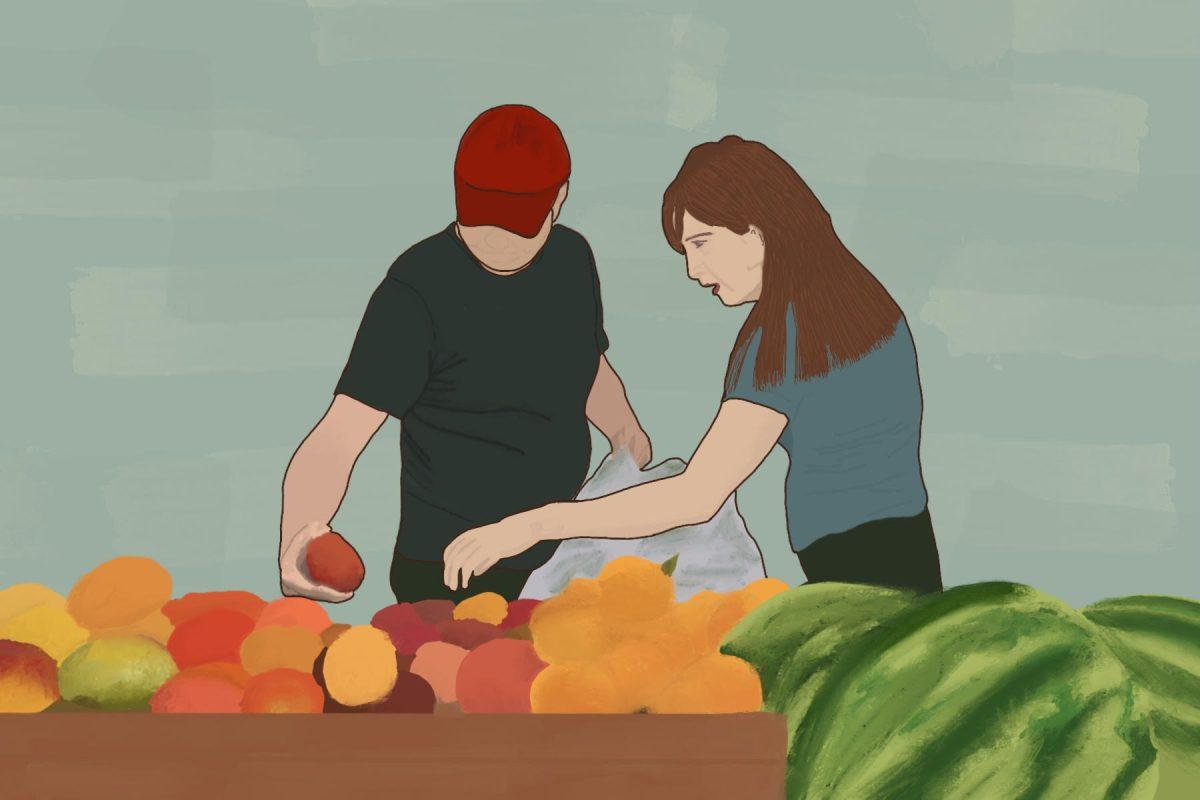In the heart of Berkeley, California, Alice Waters’ world-renowned restaurant, Chez Panisse, has attracted various customers since its opening in 1971. Waters, an award-winning chef, is mainly known for pioneering the farm-to-table movement, a more sustainable approach to farming and harvesting. Farmers’ markets began to pop up as a result of the movement, quickly capturing the attention of young adults looking to find more ethically-produced food.
Waters promoted farmers’ markets to boost food security, establish closer relationships with local farmers, and encourage sustainability. Her main motivation was to combat the growing fast-food industry that put unhealthy preservatives and fats into cheap food; placing farmers’ markets in nearby areas could grant farmers more income and allow people to eat healthier.
These markets, with rows of colorful vegetables and fruits, evoke an idyllic image of farmers leisurely tending to their crops, but the reality is far tougher. Farming, whether for a large-scale market or a tiny stall, demands intense physical labor and commitment. This romanticization often disregards the countless hours of labor that farmers invest into planting and harvesting their produce. The labor-intensive nature of farming, often coupled with limited access to advanced technology, can lead to overwork and burnout—challenges that this image fails to acknowledge.
The lack of education around farm workers’ rights makes consumers ignorant of the larger shift toward asking for government aid. Since 1971, multiple farm workers’ unions and organizations, such as the Farmers Market Coalition, have arisen, dedicated to ensuring that the farmers behind popular farmer markets earn enough to sustain themselves and their families. However, since 2007 few changes have been enacted, mainly due to the federal government refusing to focus its attention on small farmers as opposed to large-scale farms.
For instance, although the federal government has installed the Federal Crop Insurance Program to insure farmers’ harvests, a 2021 USDA study found that fewer than 10% of farmers had access to the benefits due to the high costs and excessively complex regulations. In the past decade, most of the federal grants that have been issued to farmers aim to support massive corporations, instead of smaller farmers.
One of the main goals of these markets is the opportunity for small farmers to finally share their goods without having to compete with large corporations, yet these families still struggle to maintain even a 10% profit margin, with average net incomes in the negatives according to the same USDA study. Adding in the unpredictability of farming due to weather, most farmers barely have enough to sustain themselves, let alone their families or their farms.
Romanticizing these farms removes the consumer from these overarching issues, and rather than recognizing the harsh labor conditions, shoppers simply focus on the aesthetic packaging of products. Although markets provide consumers with the ability to foster relationships with the laborers behind the produce, most ignore this important aspect to the experience. Markets provide shoppers with an insight into the lives of the hands that harvested their food, but the romanticized version of markets disguises the grueling realities of farm labor.
Young adults who enjoy farmers’ markets can spread awareness and advocate for better legislative protections for farmers by acknowledging the economic and labor-related issues, and new shoppers can transform their enthusiasm into informed action—a path that begins with dispelling the myths of and embracing the reality behind farmers’ markets.















































































